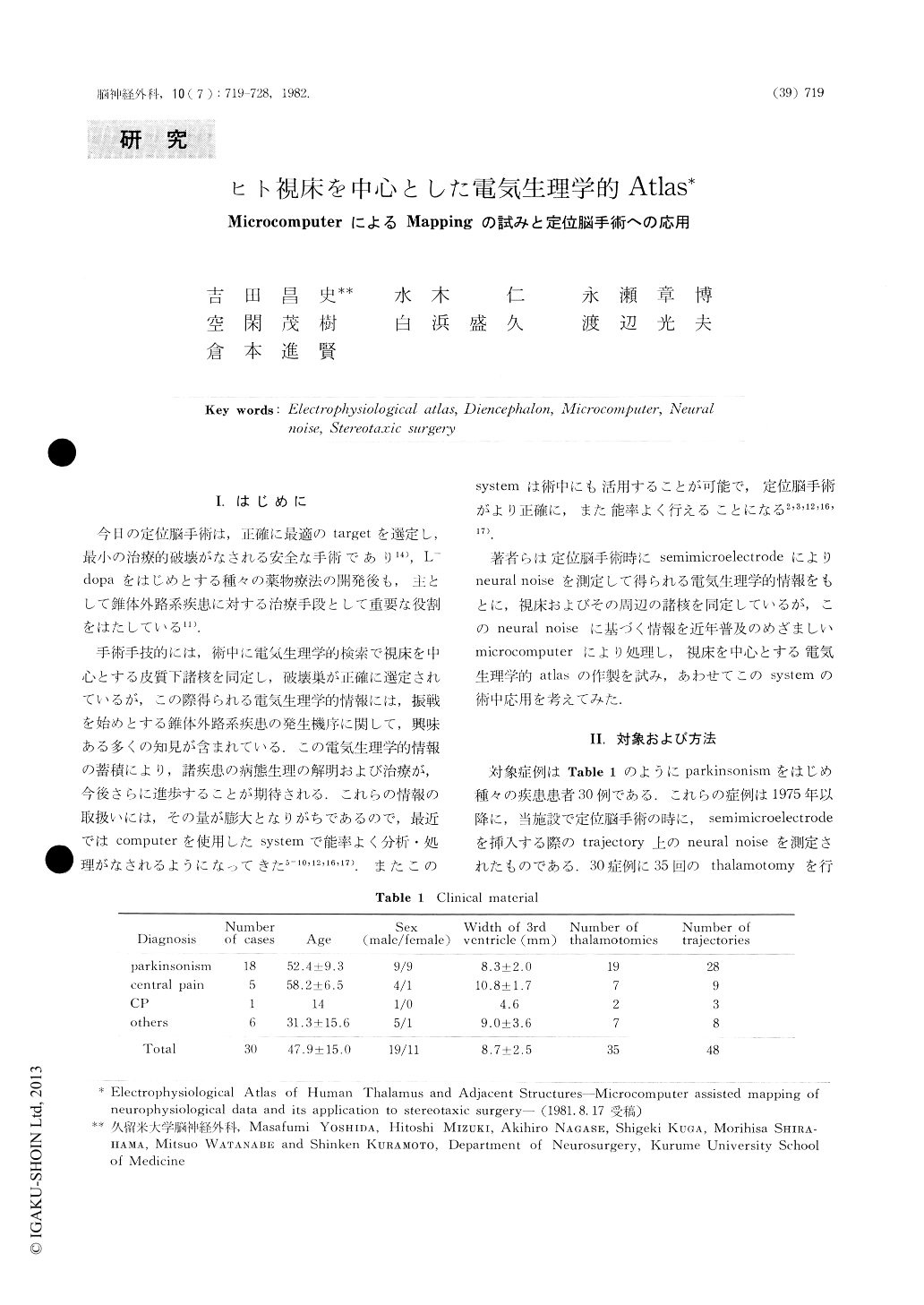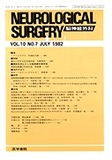Japanese
English
- 有料閲覧
- Abstract 文献概要
- 1ページ目 Look Inside
I.はじめに
今日の定位脳手術は,正確に最適のtargetを選定し,最小の治療的破壊がなされる安全な手術であり14),L-dopaをはじめとする種々の薬物療法の開発後も,主として錐体外路系疾患に対する治療手段として重要な役割をはたしている11).
手術手技的には,術中に電気生理学的検索で視床を中心とする皮質下諸核を同定し,破壊巣が正確に選定されているが,この際得られる電気生理学的情報には,振戦を始めとする錐体外路系疾患の発生機序に関して,興味ある多くの知見が含まれている.この電気生理学的情報の蓄積により,諸疾患の病態生理の解明および治療が,今後さらに進歩することが期待される.これらの情報の取扱いには,その量が膨大となりがちであるので,最近ではcomputerを使用したsystemで能率よく分析・処理がなされるようになってきた5-10,12,16,17).またこのsystemは術中にも活用することが可能で,定位脳手術がより正確に,また能率よく行えることになる2,3,12,16,17).
During stereotaxic surgery anatomical structures andtheir extent on trajectories were identified by neural noise(field potential) obtained by semi-microelectrode technique.Locations of anatomical structures (the white mater, caudatenucleus, thalamus, subthalamic field and nuclei in thesubthalamic field) were fed into microcomputer (NEC PC-8001) as 3 dimensional correlates and stored in minifloppydisc system (NEC PC-8031). Data with satisfactoryrecordings from 48 trajectories from 30 patients (18 parkin-sonism, S central pain, 7 others) entered this study.

Copyright © 1982, Igaku-Shoin Ltd. All rights reserved.


